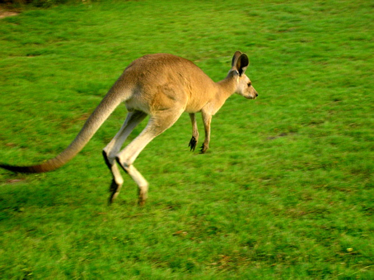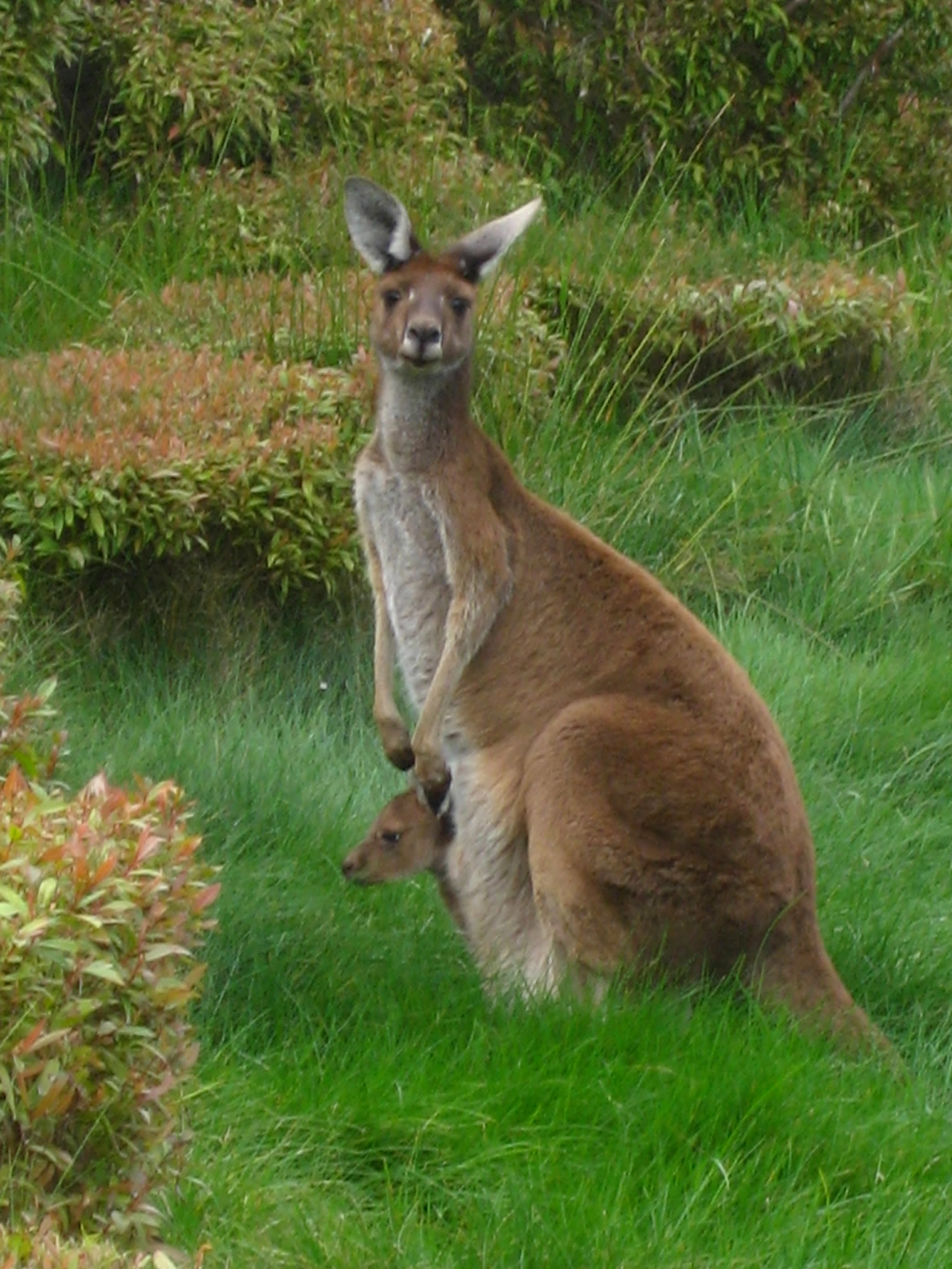 20 pounds, though some can reach 200 pounds. Female kangaroos are generally smaller than males of the same species.
20 pounds, though some can reach 200 pounds. Female kangaroos are generally smaller than males of the same species.
The Facts:
Kangaroos have powerful hind legs and short, thumbless forelimbs. Kangaroos can travel at speeds up to 30 miles per hour and can leap some 30 feet. Kangaroos use their long tails for balancing. Their bodies are covered in thick, coarse, wooly hair that can be shades of gray, brown or red. Kangaroos are marsupials, which means that females carry newborns, or "joeys," in a pouch on the front of their abdomens.
| SIZE: |
Red and gray kangaroos stand between five and six feet tall. Most weigh between 50 and 1 20 pounds, though some can reach 200 pounds. Female kangaroos are generally smaller than males of the same species.
20 pounds, though some can reach 200 pounds. Female kangaroos are generally smaller than males of the same species.
| POPULATION: |
Macropus giganteus (eastern gray kangaroo): 8,978,000.
Macropus fuliginosus (western gray kangaroo): 1,774,000.
Macropus rufus (red kangaroo): 8,351,000.
| LIFESPAN: |
| RANGE: |
| HABITAT: |
Kangaroos live in varied habitats, from forests and woodland areas to grassy plains and savannas.
| FOOD: |
Kangaroos are grazing herbivores, which means their diet consists mainly of grasses. They can survive long periods without water.
| BEHAVIOR: |

| OFFSPRING: |
| THREATS: |